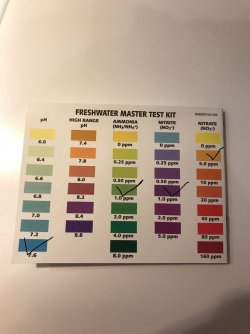Hi everyone I have 55 gallons tank with south american cichlids I did a water change this morning 25% I use Prime and Seachem stability 8 hours later I did a water test with API:
Ammonia was reading 1.0 ppm
Nitrite = 1.0 ppm
Nitrate = 5.0 ppm
Ph = 7.6
do I need to do any water changes soon? or hold on need some advice plz thanks and very appreciated.
Ammonia was reading 1.0 ppm
Nitrite = 1.0 ppm
Nitrate = 5.0 ppm
Ph = 7.6
do I need to do any water changes soon? or hold on need some advice plz thanks and very appreciated.
Attachments
Last edited by a moderator:


